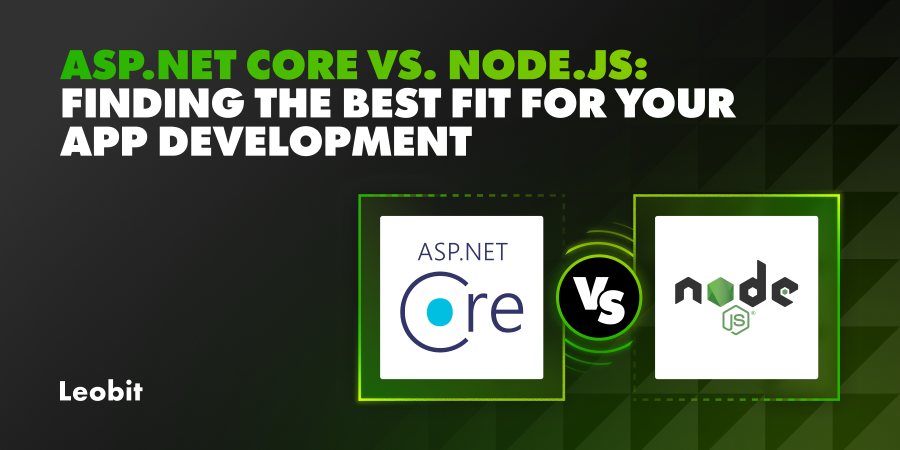The advancements in .NET 10 can be grouped into several focus areas:
- Performance enhancements
- AI-ready development features
- Faster development workflows
- Reduced development and maintenance costs
- Enhanced cross-platform development capabilities
Each of these areas brings meaningful value and deserves a closer look.
Performance enhancements
.NET has always excelled in performance, making it an efficient choice for enterprise-level applications, platforms running complex algorithms, or any solution that can’t afford performance drops. Below, we list the major updates boosting the framework’s performance.
- To shorten processing time for common operations, Microsoft introduces new methods and offers updates to regular expressions and cryptographic algorithms
- The new update provides enhancements to Just-in-Time (JIT) and Ahead-of-Time (AOT) code compilation pipelines. This improves the speed of command execution, boosting overall app performance.
- Optimized IO (input/output) operations help .NET-based apps handle and process data more efficiently.
- The update introduces notable improvements to the Entity Framework (EF) Core, .NET’s default object-relational mapping (ORM) framework that connects relational databases and object-relational programming languages. In particular, the new release introduces improvements to Support LeftJoin and RightJoin operators, and the JSON type. From a business perspective, these enhancements can significantly improve app speed.
- The compiler for Visual Basic, one of the most popular programming languages within the .NET framework, now interprets and enforces the unmanaged generic constraint. This allows .NET developers to generate more efficient code paths and more directly interact with low-level runtime APIs, which reduces overhead and helps certain operations execute faster.
Overall, performance-centric enhancements in .NET help businesses build more stable and high-performance apps. These updates make .NET-based software more responsive and ensure lower infrastructure bills thanks to improved resource usage.
AI development improvements
As part of the broader Microsoft ecosystem, .NET is frequently used in AI development. It integrates seamlessly with Azure AI Services, while Microsoft continues to release new AI tools that work efficiently with the .NET platform.
In particular, as a part of the .NET 10 release, Microsoft has introduced the Microsoft Agent Framework. This solution features a set of .NET libraries designed to reduce the complexity of AI agent development.
Software engineers can deploy AI agents using familiar .NET hosting patterns with built-in dependency injection, middleware support, and production-ready observability. Microsoft Agent Framework can also efficiently integrate AI agents with external tools and services, such as databases, automation tools, internal business systems, Azure services, etc.
Enhanced development speed
Built with developers’ convenience in mind, .NET offers multiple features and shortcuts that can boost the speed of app development with the framework. In this regard, the main innovations within the framework’s new release is the new .NET 10 SDK, which provides features for automating project setup, build, and testing workflows. These enhancements allow developers to write, run, and debug application code more efficiently, boosting the overall development speed.
The release of .NET 10 is also aligned with the release of C# 14, the newest version of one of .NET’s major programming languages. .NET 10 is meant to leverage the capabilities of C#14, like reduced boilerplate code, simplified syntax, and faster implementation of common patterns.
Both the tools and best practices in the .NET 10 SDK, along with the improvements in the C# language, are designed to automate and simplify coding workflows.
Lower development and maintenance costs
The latest .NET version unifies the framework’s ecosystem even further to reduce fragmentation between platforms. .NET 10 new features allow teams to use unified code for different workflows, which also cuts long-term support and testing costs. In this regard, some of the major innovations are introduced to ASP.NET Core.
In fact, the framework now ensures validation support in minimal APIs. This update makes input checking more consistent and easier to manage, which reduces bugs and simplifies future updates.
ASP.NET Core also introduces the TypedResults.ServerSentEvents API, which standardizes SSE handling. This update makes real-time data streams easier to implement and maintain.
















